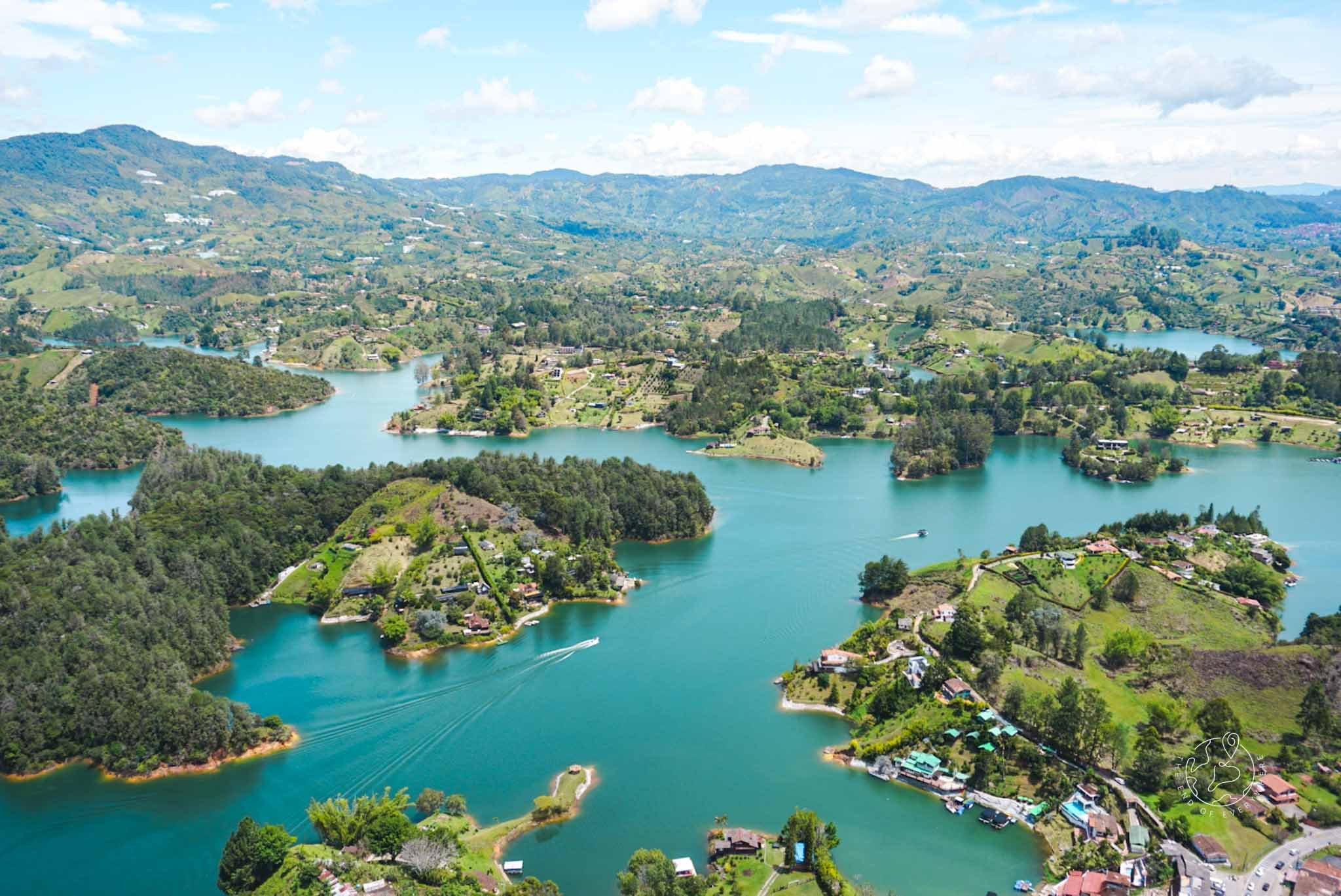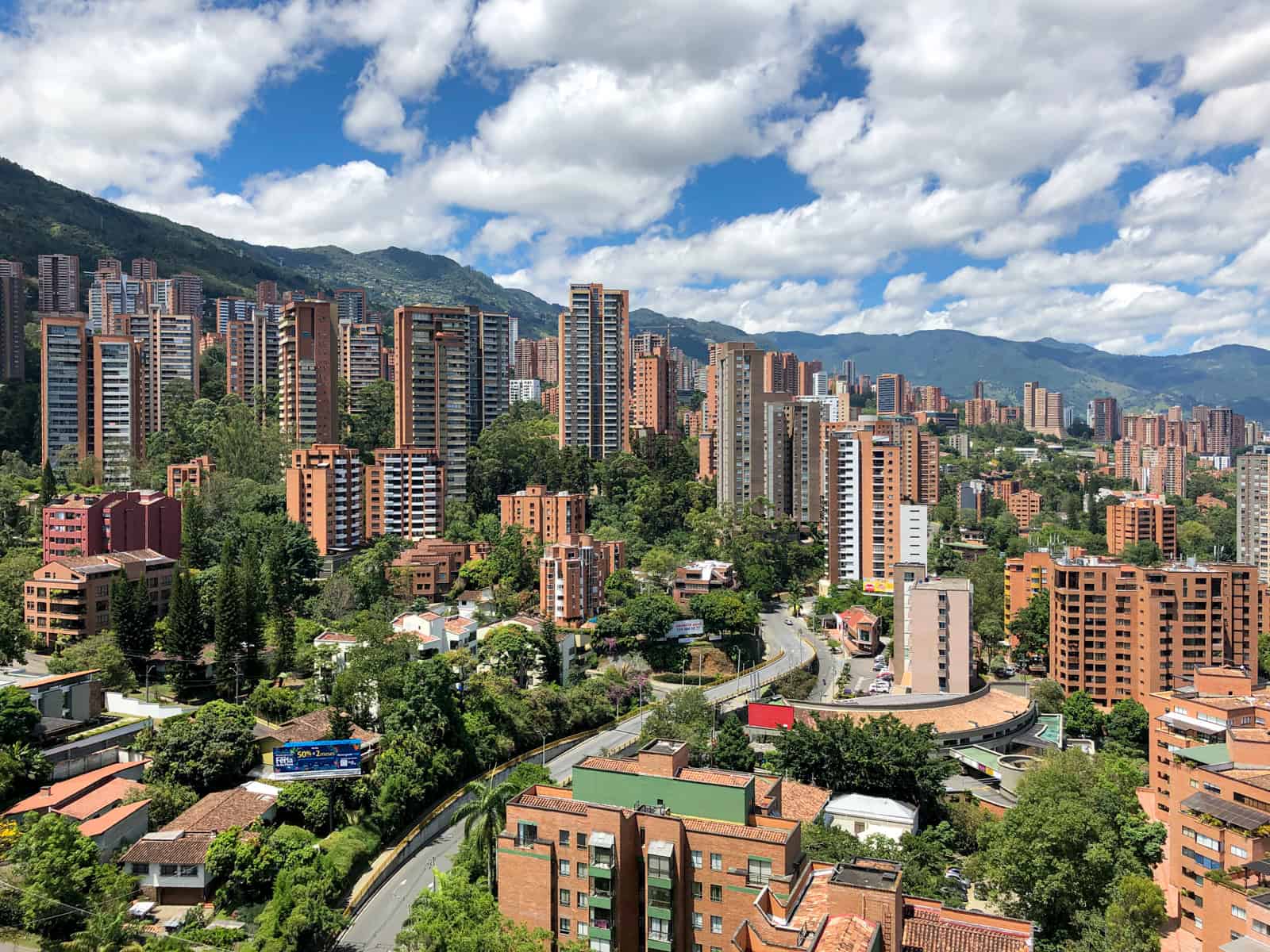



Medellín is the capital of Colombia’s mountainous Antioquia province. Nicknamed the “City of Eternal Spring” for its temperate weather, it hosts a famous annual Flower Festival. Modern metrocables link the city to surrounding barrios and offer views of the Aburrá Valley below. Sculptures by Fernando Botero decorate downtown's Botero Plaza, while the Museo de Antioquia displays more of the Colombian artist’s work. ― Google
Elevation: 1,495 m
Demonym: Medellinense
Department: Antioquia
Founded: 3 March 1717
Named after: Medellín Village
Region: Aburrá Valley
The weather in Medellín is spring-like all year, with average temperatures around 72–77°F (22–25°C). The best time to visit is during the dry seasons:
December to March
July to August
These months offer clearer skies and are perfect for exploring the city, especially for outdoor activities and festivals like the Feria de las Flores (Flower Festival) in early August.
By Air: Fly into José María Córdova International Airport (MDE), about 45 minutes from the city. It serves both domestic and international flights.
By Bus: Medellín is well connected by bus to cities like Bogotá (approx. 10–12 hours), Cali, and Cartagena.
By Car: Renting a car is possible, but traffic and hilly terrain may be challenging for newcomers.
Here are the top attractions in Medellín, Colombia:
Once the most dangerous neighborhood in Medellín, it's now a symbol of transformation. Famous for:
Colorful murals and graffiti
Outdoor escalators
Street performances and local guides
Plaza Botero: Features 23 massive bronze sculptures by Fernando Botero.
Museo de Antioquia: Art museum showcasing Botero’s work and other Latin American artists.
Scenic cable car rides over the city’s hillside communities.
Connects to Parque Arví and offers a look into Medellín’s social urban planning.
Eco-reserve with hiking trails, bird watching, and artisan markets.
Peaceful nature escape accessible by Metrocable.
A replica of a traditional Antioquian village.
Located on Cerro Nutibara, offering 360° views of Medellín.
Located in El Poblado, it’s the center of nightlife, bars, restaurants, and music.
Great for mingling with locals and fellow travelers.
Free entrance to a peaceful park with native flora, butterfly house, and orchid displays.
Great picnic and relaxation spot.
Climb the 740 steps up El Peñol Rock for stunning views.
Explore the colorful lakeside town of Guatapé, famous for its hand-painted building panels (zócalos).
One of the largest brick cathedrals in the world.
Located in Bolívar Park, a bustling local spot.
A moving museum dedicated to Medellín’s past violence and the resilience of its people.
Combines digital exhibits, photography, and personal stories.
Ride the Metrocable: Get stunning views of the city and explore hillside communities.
Visit Comuna 13: Once a dangerous area, now a vibrant neighborhood known for murals, street performers, and transformation tours.
Parque Arví: Take a cable car to this nature reserve for hiking and picnicking.
Plaza Botero & Museo de Antioquia: See Fernando Botero’s oversized sculptures and explore modern Colombian art.
Explore Pueblito Paisa: A recreated traditional village with panoramic views of the city.
Day trip to Guatapé: Climb the massive rock (La Piedra del Peñol) and visit a colorful lakeside town.
Luxury: Upscale hotels and rooftop pools in El Poblado.
Mid-range: Boutique hotels and Airbnb options in Laureles or El Poblado.
Budget: Hostels in Manila, El Poblado offer great value and social vibes.
Unique stays: Eco-lodges near Parque Arví or design-forward hotels in the hills.
Must-Try Dishes:
Bandeja Paisa: Hearty plate with beans, rice, meat, plantain, egg, and arepa
Arepa de choclo: Sweet corn arepa often with cheese
Mondongo soup: Traditional tripe stew
Empanadas & buñuelos from street vendors
Local Experiences:
Visit a rooftop restaurant in El Poblado for skyline views
Explore food markets like Mercado del Río for gourmet bites
Eat at traditional “menú del día” spots for authentic Colombian lunch specials
People: Medellín locals (Paisas) are proud, friendly, and known for their warmth and entrepreneurial spirit.
Language: Spanish is dominant; English is limited but more common in tourist areas.
Music & Dance: Reggaeton, salsa, and vallenato play everywhere; dance clubs are vibrant at night.
Art Scene: Strong public art culture—Botero’s influence is everywhere. Local graffiti tours are an immersive way to see urban expression.
Innovation & Resilience: Medellín has transformed from a past of violence to a city of innovation and community-driven urban renewal.